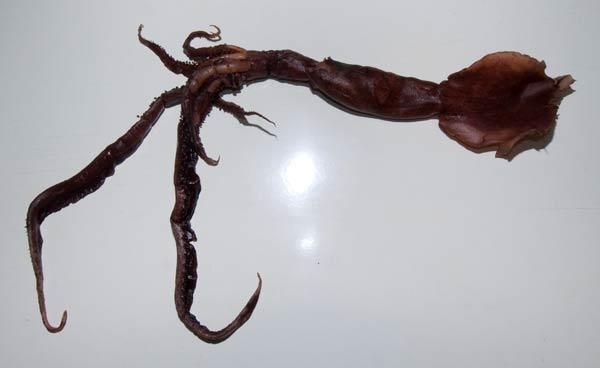
New Large Squid Species Discovered

A newfound species of large squid has been discovered from an expedition to mountains submerged in the Indian Ocean.
A specimen of the new species, about 30 inches (70 centimeters) long, belongs to the Chiroteuthid family, deep-sea squid known for their long, slender bodies and spectacular bioluminescent displays — impressive underwater light shows that the creatures put on to lure prey.
Last year scientists gathered more than 7,000 samples of sea life during a seamounts cruise led by the International Union for Conservation of Nature. So far, 74 species of squid have been identified from the cruise, representing about a fifth of all known varieties of squid.
"We're obviously very pleased, because we knew we had quite a high diversity of squid in the catches but we didn’t know just how high it was," Alex Rogers, a marine biologist with the Zoological Society of London and the project's lead scientist, told OurAmazingPlanet.
The discovery is part of the Seamounts Project, which started a year ago when a team of the world's leading marine experts ventured out on a six-week research expedition above seamounts in the southern Indian Ocean. Seamounts are mountains that rise from the ocean floor but, unlike islands, don't reach the surface.
"For 10 days now, 21 scientists armed with microscopes have been working through intimidating rows of jars containing fishes, squids, zooplankton and other interesting creatures. Many specimens look similar to each other, and we have to use elaborate morphological features, such as muscle orientation and gut length, to differentiate between them," Rogers said.
Carl Gustaf Lundin, head of the IUCN Global Marine Program, said the discoveries are not only a boon to scientists but will help improve conservation and management of marine resources in the area and future management of deep-sea ecosystems around the world.
Sign up for the Live Science daily newsletter now
Get the world’s most fascinating discoveries delivered straight to your inbox.
This article was provided by OurAmazingPlanet, a sister site of Live Science.












